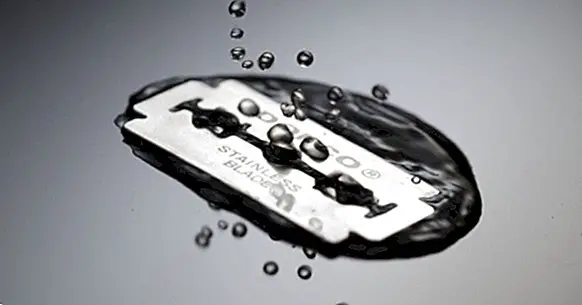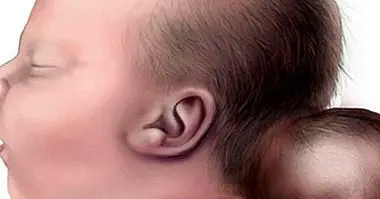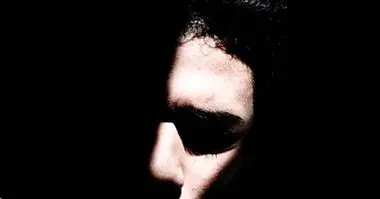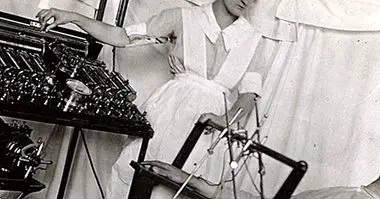Non-Suicidal Self-injury: Who is affected and why is it produced?
Physical pain has almost always been defined as the sensation that produces aversion reactions; that is, an unpleasant experience that we try to avoid. It appears when our nervous system registers that certain tissues of cells have been injured and allows us to react in time to get away from danger.
However, human beings do not always act in a manner consistent with this logic; In some cases pain is something intentionally sought, something that is achieved through self-harm. This idea is what is behind the concept of Non Suicidal Self-harm .
What is Non Suicidal Self-injury?
Self-injury is associated with suicide attempts very easily, but in reality, in many cases, the objective in mind when it occurs is not death itself: self-injury is valued in itself, not as a means.
Thus, Non Suicidal Self-injury consists of the type of self-injury that occurs because of a learned dynamic to try to reduce levels of anxiety through practices such as cutting, biting or beating against hard objects in which the damage is damaged. own body.
A mental disorder?
There is not a broad consensus about whether Non Suicidal Self-injury is itself a mental disorder or a symptom that can reveal the presence of one. In the diagnostic manual DSM-IV appears as a symptom linked to the Limit of Personality Disorder, although in version V it appears as a diagnostic label of its own.
The truth is that this behavior is in itself harmful, but at the same time it can be considered as a "lesser evil" that serves to alleviate a very high state of anguish in which the root of the real problem is found.
Why is ANS produced?
What is sought through the ANS is a feeling of momentary relief produced in part by the distraction of physical pain, which allows you to disengage attention from abstract ideas and memories that are even more painful.
According to the logic behind Non-suicidal Self-injury, the simple possibility of experiencing something that is not that kind of anxiety and that is a solution for rumination (thinking in a loop about something that produces discomfort) is valued very positively.
In other words, to understand why Non Suicidal Self-injury appears as a pattern of learned actions, it is necessary to take into account not the pain felt at the time of injury, but the effect that pain produces on a person who has been suffering for a long time for other reasons . That is, we must not see the snapshot or the frozen image of self-injury, but the process of sensations and experiences that have led to that outcome, since that is what allows us to take into account the usefulness that pain can have for the person. In that sense, it would resemble trichotillomania.
There is also an alternative explanation about the causes of the ANS that links it to a low self-esteem and a tendency to think negatively about oneself, with which Self-injury would be a way of reflecting that disparagement towards oneself through self-punishment . However, it is quite possible that low self-esteem is another symptom of the underlying problem, and not the cause of Non Suicidal Self-injury.
The ANS as a predictor of suicides
Although the purpose of the ANS is not to end one's life, it is true that their presence is a predictor of possible suicide attempts in the future .
A self-harming person will have more possibilities of getting to propose to die, among other things because he has already assimilated the "ritual" that can lead to this kind of events and think about it more often. In addition, the same causes that lead to this pattern of learned behavior can lead to the desire to die, either in a more or less rational or in full crisis of nerves.
Symptoms of Non Suicidal Self-injury
The most obvious symptoms of ANS are the scars produced by the cuts and bites and the bruises left by the blows.
The cuts, which are very common, usually appear on arms and legs , and therefore can be visible with a wide variety of clothing types. Other forms of self-injury are more discreet. Normally you start with parts of the arms and legs that are close to the thorax, since they are the parts of the extremities that are easier to hide and at the same time they are not as sensitive areas as the front parts of the trunk (as long as the inner part of the arms).
The profile of people who self-injure
Non Suicidal Self-injury is more frequent among young people: fundamentally, adolescents and post-adolescents. This may be due to the fact that the emotional instability produced by the hormonal changes produces major and more serious anxiety crises, added to the changes of social type that appear in this stage of life : doubts about one's own identity, about what is going to be studied, problems in fleeting relationships, etc.
In addition there are certain personality traits that are more frequent among people who practice this kind of self-harm. It is about people with high impulsivity and emotionality (or sensitivity) that, in addition, have low self-esteem and value their abilities to the downside and in a pessimistic way.
Treatments and psychotherapy
The most effective psychotherapeutic options are those that are framed within Cognitive Behavioral Therapies, that is, they address both actions and thoughts. Specific, The Dialectical Behavior Therapy (TDC) of Linehan , created especially to address cases of Borderline Personality Disorder, has been widely used.
The basis of these therapeutic approaches is to constantly postpone the moment of self-injury until it is not produced. It is a way of acting on the behavior that reminds the treatment of addictions.
In any case, the role of psychologists is focused both on the decrease in the frequency and intensity of these behaviors and on the learning of ways of thinking and relating to others that allow get away from stress adaptively and without suffering . In the same way, a level of vigilance is maintained to detect moments in which suicidal ideation may appear.



















